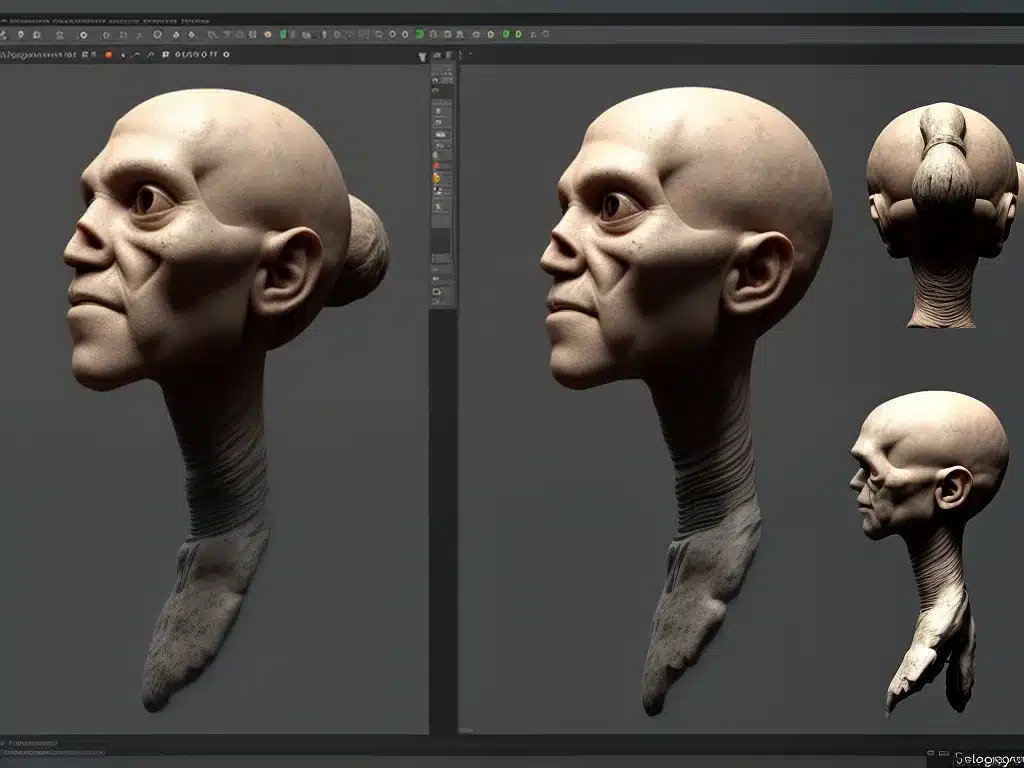Introduction
Photogrammetry is the process of generating 3D models from 2D images. It has evolved significantly over the past decade to become an accessible and powerful tool for 3D artists. In this article, I will provide an in-depth look at the evolution of photogrammetry and how it has transformed 3D asset creation.
The Early Days of Photogrammetry
Photogrammetry has been around since the mid-19th century. It started as a technique used for topographic mapping and surveying. Early photogrammetry required expensive, specialized equipment and was a complex, labor-intensive process.
In the 1990s, photogrammetry started being used for 3D modeling. However, the process still relied on expensive hardware like laser scanners. The generated 3D models lacked detail and required extensive clean-up work to be usable. At this stage, photogrammetry was limited to niche applications in fields like cultural heritage preservation.
The Rise of Image-Based Modeling
In the 2000s, image-based modeling started gaining popularity as an alternative to laser scanning. This new photogrammetric approach relied solely on 2D digital photos taken from multiple angles around the subject.
Image-based modeling opened up photogrammetry to a wider audience. It was cheaper, more flexible and accessible than laser scanning. However, the process was still semi-manual. 3D artists had to meticulously align hundreds of photos and edit the reconstructed geometry. The results were often noisy and filled with artifacts.
Automation Through Computer Vision
The biggest evolution came with the integration of computer vision algorithms into photogrammetry software in the 2010s. Tools like RealityCapture, Metashape and 3DF Zephyr could automatically analyze photos and generate 3D models with little human input.
Computer vision brought automation to the reconstruction process. It enabled photogrammetry to be used for iterative 3D scanning. Artists could instantly preview 3D models while capturing photos in real-time. The automation also improved model quality and accuracy.
Photogrammetry for the Masses
In the mid-2010s, user-friendly photogrammetry mobile apps like Trnio and Scann3D emerged. These apps allowed instant 3D scanning using just a smartphone camera.
While industrial photogrammetry software continued to advance, the mobile apps brought the technology to the masses. Amateurs and professionals alike could easily create 3D models with photorealistic textures. The consumerization of photogrammetry accelerated its adoption across various industries.
Key Milestones
Here are some of the key milestones in the evolution of photogrammetry:
- 1859 – First photogrammetric apparatus patented by Aimé Laussedat
- 1990s – Transition from analog to digital photogrammetry
- Early 2000s – Image-based modeling gains traction
- 2010s – Computer vision integration and automation
- Mid 2010s – Photogrammetry mobile apps launch
Current Capabilities
Today, photogrammetry has evolved into a highly sophisticated technology. Here are some of its current capabilities:
- Detailed 3D reconstruction from as little as 30-50 photos
- Automated processing pipeline from photos to final model
- Scalable – can scan small objects to entire buildings
- High resolution color textures up to 8K
- Output formats like FBX, OBJ, glTF for use in 3D software
- Support for VR/AR applications
- Integration with procedural modeling and CAD
- Accurate measurement and deviation analysis
Applications Across Industries
Photogrammetry is now used extensively across numerous industries:
- Cultural heritage – Digitizing artifacts, monuments and historical sites
- Broadcast – Asset scanning for visual effects in movies and games
- AR/VR – Creating digital assets for augmented and virtual reality
- Engineering – Surveying infrastructure, construction progress monitoring
- Health and safety – Documenting accident and crime scenes
- Manufacturing – Quality inspection and reverse engineering
- Architecture – As-built modeling, building information modeling (BIM)
- E-commerce – Creating 3D models of products for online stores
Benefits Over Traditional 3D Modeling
While traditional 3D modeling relies on artistic interpretation, photogrammetry generates accurate 3D replicas of real-world objects and environments. Some key advantages of photogrammetry include:
- Realism – Near-perfect reproduction of geometry, colors and textures
- Speed – Rapid generation of detailed 3D assets
- Scalability – Ability to scan small objects as well as city-scale locations
- Accessibility – Democratization of 3D scanning capabilities
- Cost – Affordable hardware options compared to laser scanning
- Simplicity – No artistic/modeling expertise required
Current Challenges
Despite the immense progress, photogrammetry still poses some challenges:
- Results depend heavily on photo capture quality and lighting
- Capturing textureless and reflective surfaces is difficult
- Large scan datasets require robust computer hardware
- Moving objects can cause artifacts and inaccuracies
- Advanced post-processing skills are needed for professional workflows
- Struggles with non-static, dynamic objects and scenes
The Future
Photogrammetry still has tremendous room for growth. Here are some potential developments in the future:
- More robust computer vision algorithms
- Combination with procedural techniques for hybrid modeling
- Capturing non-static scenes by integrating photogrammetry with video and AI
- Miniaturization of scanning hardware for increased portability
- Generation of animatable digital humans and creatures
- Real-time 3D reconstruction on mobile devices
- Using drones, lidar and other sensors alongside photogrammetry for increased automation
The availability of huge datasets, advancements in AI/deep learning and developments in 3D sensing will unlock even more possibilities for photogrammetry. It is bound to become an integral part of many more 3D workflows in the near future.
Conclusion
In summary, photogrammetry has evolved from an obscure, niche technology into a flexible, accessible tool for 3D content creation. The integration of computer vision and automation opened it up for widespread adoption across industries. While some challenges remain, photogrammetry enables rapid digitization of real-world objects and environments with unparalleled detail and realism. The future is bright for photogrammetry as it continues to empower 3D artists and transform digital asset creation.













